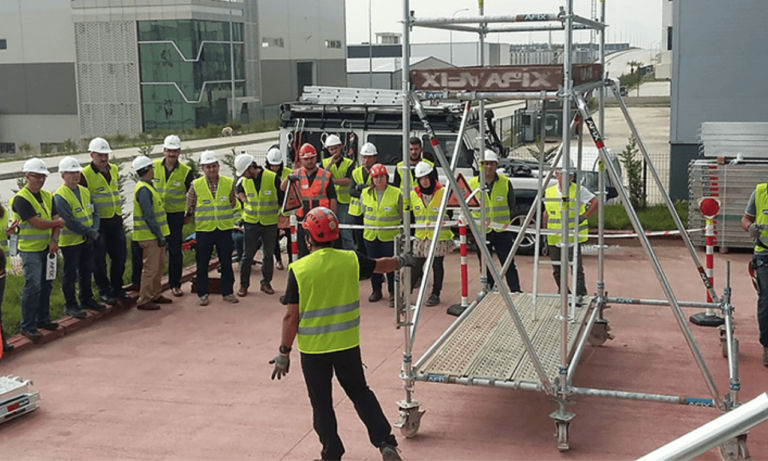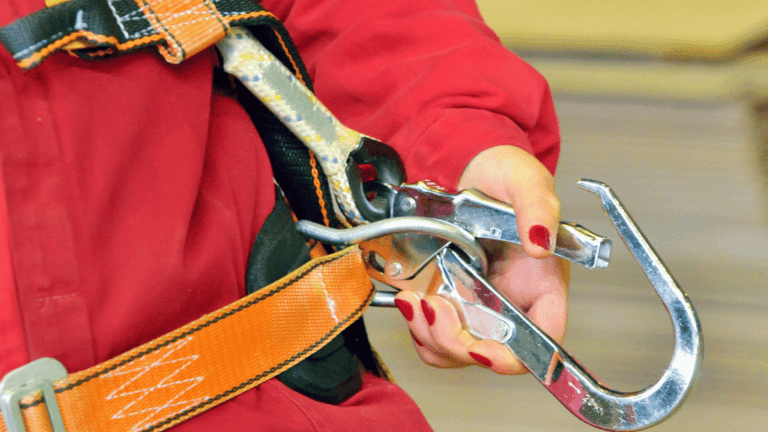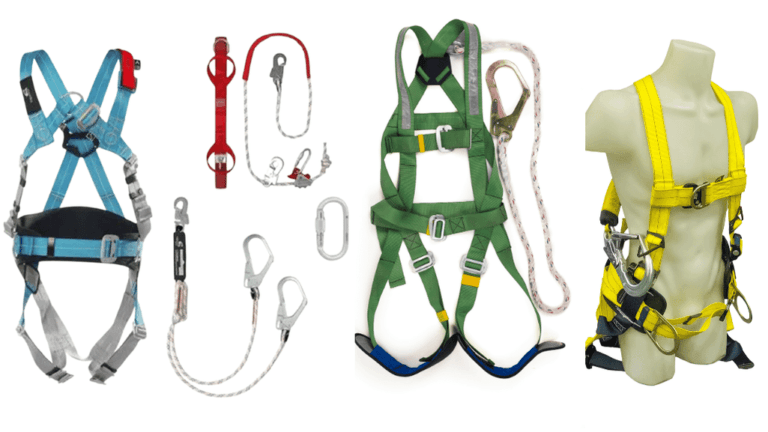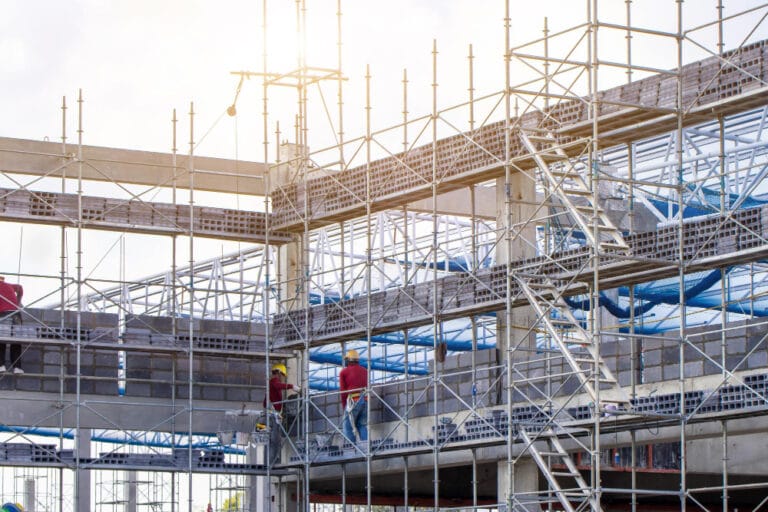Phone:
(+65)8319-0742
In today’s workplace, safety leaders are key to keeping employees safe and work environments productive. They have a special set of skills. These include making and enforcing health and safety policies, training employees, and doing safety checks. They also work to improve the safety culture in their organizations.
To be a great safety leader, you need many skills. Being able to communicate clearly is very important. They must share important safety information with everyone. Leadership skills, like inspiring and motivating, are also crucial for a strong safety culture.
Being good at assessing risks and solving problems is also important. This helps them find and fix potential dangers. Making quick, smart decisions is another key skill. This is especially true in emergency situations.
Leaders who are compassionate, self-aware, and committed to learning are more effective. They also need to be good listeners. This helps them build trust and rapport with their team, leading to better safety outcomes.
Investing in these skills can greatly benefit a company. A strong safety culture can lead to lower turnover, fewer injuries, and happier employees. By focusing on safety and training leaders, businesses can create a safer and more productive workplace. Learn more about the importance of using high-quality metal scaffolding to ensure worker safety on construction sites.
Key Takeaways
- Successful safety leaders have a mix of communication, leadership, risk assessment, problem-solving, and decision-making skills.
- Good communication is key for sharing safety information and guidelines with everyone.
- Leadership skills, like inspiring and motivating, are important for a strong safety culture.
- Risk assessment and problem-solving skills help find and fix potential dangers.
- Companies with a strong safety culture have lower turnover, fewer injuries, and happier employees.
Essential Traits of Effective Safety Leaders
Effective safety leaders have a special mix of traits. They are adaptable, have technical skills, manage teams well, and always look for ways to improve. These qualities help them make their workplaces safer and better for everyone.
One key trait is inspiring and motivating their teams. They lead by example and follow safety rules closely. This builds trust and respect among employees.
They also empower their team to care for their safety and others’. This makes the team more engaged and proactive.
Effective safety leadership in public safety relies on knowing your people and understanding their unique strengths and weaknesses. Leaders must decipher the “algorithms” of independent team members and find ways to empower them to perform effectively together.
Effective safety leaders are also great at spotting and fixing risks before they happen. They make sure their workplaces are safe for everyone. They keep up with new safety rules and practices to keep their organizations safe and ahead.
They are also skilled at solving problems and making decisions, especially in tough situations. They think clearly and creatively. This helps their teams work together to find the best solutions.
| Trait | Impact on Safety Leadership |
|---|---|
| Adaptability | Enables leaders to navigate change and embrace new safety practices |
| Technical Expertise | Ensures leaders have the knowledge to implement and enforce safety protocols |
| Team Management | Allows leaders to inspire, motivate, and guide their teams towards a safer work environment |
| Continuous Improvement Mindset | Drives leaders to consistently seek opportunities to enhance safety measures and processes |
Finally, effective safety leaders never stop learning. They know safety is always changing. By keeping up with new safety tech, rules, and practices, they keep their workplaces safe and leading.
Communication Skills The Foundation of Strong Leadership
Communication skills are key to being a great leader. Leaders know how important it is to communicate clearly and well. This helps create a positive and productive work place. By improving their communication skills, leaders can motivate their teams, gain trust, and achieve goals.
Active Listening
Active listening is crucial for good communication. Leaders who listen well show they care about their team’s thoughts and feelings. They keep eye contact, ask questions, and repeat back what they heard. The Center for Creative Leadership says this helps understand and remember important information.
Clear and Concise Messaging
Leaders need to share their messages clearly and simply. This means breaking down big ideas into smaller parts and using easy language. Clear messages help avoid confusion and boost work efficiency.
“The single biggest problem in communication is the illusion that it has taken place.” – George Bernard Shaw
Adapting Communication Style to the Audience
Good leaders know they must change how they talk to different people. They adjust their style based on who they’re talking to, like their background or how they like to communicate. This helps build strong relationships and teamwork.
| Communication Skill | Impact on Leadership Effectiveness |
|---|---|
| Active Listening | Builds trust and understanding |
| Clear Messaging | Enhances productivity and minimizes confusion |
| Adapting Communication Style | Strengthens relationships and fosters collaboration |
In short, great leaders focus on improving their communication skills. By listening well, sharing messages clearly, and adjusting their style, they make a workplace that grows, innovates, and succeeds.
Leadership Qualities that Inspire and Motivate
Effective safety leaders have special qualities that inspire and motivate their teams. These qualities help build a positive safety culture. They make sure everyone works together to keep the workplace safe.
Leading by Example
Leading by example is key for safety leaders. When they show they care about safety, their team follows. They follow safety rules, wear PPE, and talk openly about safety issues.
They also find and fix safety problems. This shows their team that safety is important. It proves everyone has a role in keeping the workplace safe.
Empowering Team Members
Empowering team members is another important quality. When leaders give their team the tools and freedom to manage safety, they feel responsible. This makes them more engaged in safety.
Empowerment means letting team members make safety decisions and get training. It also means rewarding them for safe work. This shows leaders trust and believe in their team’s ability to keep the workplace safe.
Fostering a Positive Safety Culture
Successful safety leaders also build a positive safety culture. They make safety a priority in every part of work. This culture is based on open communication, teamwork, and always trying to get better.
To build this culture, leaders listen to their team and ask for ideas. They invest in safety training and equipment. This shows they are serious about keeping the workplace safe.
| Leadership Quality | Impact on Safety Culture |
|---|---|
| Leading by Example | Sets a powerful precedent for team members to follow, demonstrating the importance of safety through actions and behaviors. |
| Empowering Team Members | Fosters a sense of personal responsibility and engagement, giving team members the tools and autonomy they need to prioritize safety. |
| Fostering a Positive Safety Culture | Creates an environment where safety is valued, prioritized, and integrated into every aspect of the work process, promoting open communication and collaboration. |
By showing these qualities, safety leaders inspire their team to focus on safety. This creates a workplace where everyone is dedicated to safety and health.
Risk Assessment Abilities Proactively Identifying Hazards
Successful safety leaders are great at spotting hazards in the workplace. They know how to manage risks using standards like ANSI/ASSP Z10 and ANSI/ASSP/ISO 45001. This lets them gather data, analyze records, and understand work processes to find potential risks.
Creating detailed risk assessment plans is key for safety leaders. These plans outline the scope, goals, and risk criteria. This helps in identifying and reducing hazards. Safety pros need to be good at both quantitative and qualitative risk analyses and at sharing risks with others.
According to the U.S. Bureau of Labor Statistics, there were 2.8 million injuries and illnesses reported in 2022, with nearly 5,500 being fatal. At least 80% of all incidents can be attributed to human factors involving individuals, organizations, and working conditions.
To handle risks well, safety leaders need to come up with ways to lower risks. They must check if these measures work and keep an eye on them. Using the hierarchy of controls is key to reducing risks. This method starts with the best controls, like eliminating hazards or using engineering solutions.
| Risk Assessment Step | Description |
|---|---|
| Data Gathering | Analyze records, understand work processes, and evaluate hazards and risks |
| Plan Development | Set scope, define objectives, and identify risk criteria |
| Risk Analysis | Conduct quantitative and qualitative risk analyses, and communicate risks effectively |
| Risk Treatment | Formulate options to reduce risks, assess control effectiveness, and monitor risk control measures |
Safety leaders need to keep up with new risk assessment tools and methods. This helps them protect their teams better and build a safety-first culture. Companies like Intelex offer software to help reduce incidents and improve safety culture.
By using their risk assessment skills, safety leaders can make workplaces safer. They help reduce the impact of accidents on employees and business. This leads to a safer and more stable work environment.
Problem-Solving Skills Navigating Challenges Effectively
In today’s fast-paced world, safety leaders must have strong problem-solving skills. A LinkedIn study found that 57% of employers value soft skills like problem-solving more than hard skills. Leaders with these skills can adapt, encourage innovation, and improve efficiency.
Places like the Indian School of Business and IIM Kozhikode focus on teaching these skills. Leadership competencies, including problem-solving, are key for success. They vary by role and industry.
Analytical Thinking
Analytical thinking is crucial for solving problems. Safety leaders need to gather data, find patterns, and make conclusions. This skill helps them assess risks, evaluate solutions, and make safe decisions for their teams.
Creativity in Finding Solutions
Creativity is vital for coming up with new solutions. Safety leaders who think creatively can solve problems in unique ways. Encouraging diverse ideas leads to better solutions.
“Creativity is intelligence having fun.” – Albert Einstein
Collaborative Problem-Solving
Collaborative problem-solving uses the team’s collective knowledge. It makes everyone feel involved, promotes open communication, and brings different perspectives. This approach strengthens the team and leads to better solutions.
Effective safety leaders keep learning and improving. Courses like IIM Calcutta’s “Executive Programme in Leadership & Management” and modern scaffolding techniques help them stay updated. These resources are essential for problem-solving and industry trends.
| Skill | Importance |
|---|---|
| Analytical Thinking | Assessing risks and evaluating solutions |
| Creativity | Generating innovative solutions |
| Collaboration | Leveraging collective knowledge and fostering trust |
By focusing on problem-solving, safety leaders can overcome challenges and inspire their teams. They use analytical thinking, creativity, and teamwork to improve safety and success in their organizations.
Decision-Making Prowess: Confidence in Critical Situations
In the world of safety leadership, making good decisions is key. Leaders must be confident and able to handle tough situations. They keep their team safe and the organization running smoothly.
They use their experience and intuition to quickly spot risks. Then, they choose the best strategies to avoid dangers.
Confident decision-making starts with gathering the right information. Leaders must understand data and listen to different opinions. This helps them make informed choices.
But it’s not just about the facts. Leaders also need to stay calm and communicate well. They must inspire trust in their team.
A study on leadership shows that clear communication and flexibility are important. Leaders who stay calm and confident can get their team to follow safety rules.
“Every block of stone has a statue inside it, and it is the task of the sculptor to discover it.” – Michelangelo
Safety leaders must see risks before they happen. They need to understand their work environment and think creatively. Tools like SWOT analysis help them make smart choices.
Their ability to make decisions shows their dedication to safety. They combine knowledge, emotional smarts, and a proactive attitude. This creates a safe culture where everyone values safety.
Through learning and self-improvement, safety leaders get better at making decisions. They lead their teams to success and safety.
Successful Safety Leaders Generally Possess Which of the Following Skills
Successful safety leaders have many skills. These skills help them manage their teams well. They also improve safety performance continuously. These skills are key to keeping a safe work place and meeting goals.
Adaptability
Adaptability is very important for safety leaders. They need to change their plans fast when things change. This might mean new safety rules, new tech, or changing old ways to keep everyone safe.
Those who adapt well can handle surprises. They keep the work place safe even when things change.
Technical Expertise
Knowing a lot about safety is crucial. Safety leaders need to know the rules, standards, and best ways to do things. This knowledge helps them lead their teams right and follow safety rules.
They can spot dangers, make safety plans, and find ways to lower risks. This is thanks to their deep understanding of safety.
Team Management
Managing a team well is important. Safety leaders need to give clear tasks, feedback, and encourage teamwork. They should make sure everyone feels involved and motivated to keep things safe.
By building good relationships, they create a safety culture. This culture spreads throughout the company.
Continuous Improvement Mindset
Lastly, successful safety leaders always want to get better. They look for ways to make safety better, find areas to improve, and make changes. This mindset keeps them updated with new trends and encourages their team to do the same.
By always looking to improve, they keep their company safe and ahead in their field.
| Skill | Importance |
|---|---|
| Adaptability | Enables safety leaders to respond effectively to changing circumstances and maintain a safe work environment. |
| Technical Expertise | Allows safety leaders to ensure compliance with regulations and implement appropriate safety measures. |
| Team Management | Empowers safety leaders to engage employees, foster collaboration, and create a positive safety culture. |
| Continuous Improvement Mindset | Drives safety leaders to seek out new ways to enhance safety processes and maintain a competitive edge. |
These skills help safety leaders manage their teams, improve safety, and build a safety culture. By working on these skills, future safety leaders can succeed in this important role.
Cultivating a Safety-First Mindset Among Employees
Successful safety leaders know how key it is to have a safety-first mindset in their team. They make safety a big part of their company culture. This way, employees feel safe, valued, and empowered to choose safety.
Studies show that most workplace accidents are caused by human actions. But, they are mostly preventable. By focusing on workplace safety and injury prevention, companies can cut down on risky behaviors. This leads to fewer accidents, less employee turnover, and more productivity.
Providing Ongoing Training and Education
One great way to build a safety-first mindset is through ongoing training. Teaching employees about ergonomics, lifting, and avoiding hazards is key. Visual aids like posters help spread the word about safety.
By making sure everyone knows the safety rules, leaders can build a smart and proactive team. This knowledge helps everyone stay safe at work.
| Training Topic | Frequency | Benefits |
|---|---|---|
| Ergonomics | Quarterly | Reduces risk of musculoskeletal disorders |
| Proper Lifting Techniques | Semi-annually | Prevents back injuries and strains |
| Hazard Avoidance | Annually | Increases awareness of potential dangers |
Recognizing and Rewarding Safe Behaviors
Good safety leaders also recognize and reward safe actions. By showing appreciation for those who prioritize safety, they encourage others to do the same. Ways to do this include:
- Offering bonuses or incentives for maintaining a safe work environment
- Publicly acknowledging employees who demonstrate exceptional safety practices
- Providing opportunities for career advancement based on safety performance
By always emphasizing the importance of safety, leaders can create a culture where it’s a core value. This approach builds trust, encourages open communication, and leads to a safer, more productive workplace.
“Safety is not a goal that we reach, but a way of life that we live each and every day.” – Anonymous
Conclusion
Successful safety leaders have a special mix of essential skills. They are great at communicating, motivating their teams, and solving problems. They also make confident decisions and adapt to challenges.
These leaders make sure everyone feels valued and supported. They work hard to keep the workplace safe and healthy. Their dedication to safety inspires others to follow their example.
Companies need to focus on developing strong safety leaders. They should provide training and support to help them grow. This way, they can handle the complexities of today’s work environments.
These leaders are key in making workplaces safer. They help implement best practices, like using wooden scaffolding. They also encourage continuous improvement.
The influence of successful safety leaders goes beyond their teams. They set a high standard for safety and care for their colleagues. This inspires others, creating a positive change in industries.
To build safer workplaces, we must value and develop these skills in our safety leaders. They are crucial for creating a safer and more resilient work environment for everyone.























